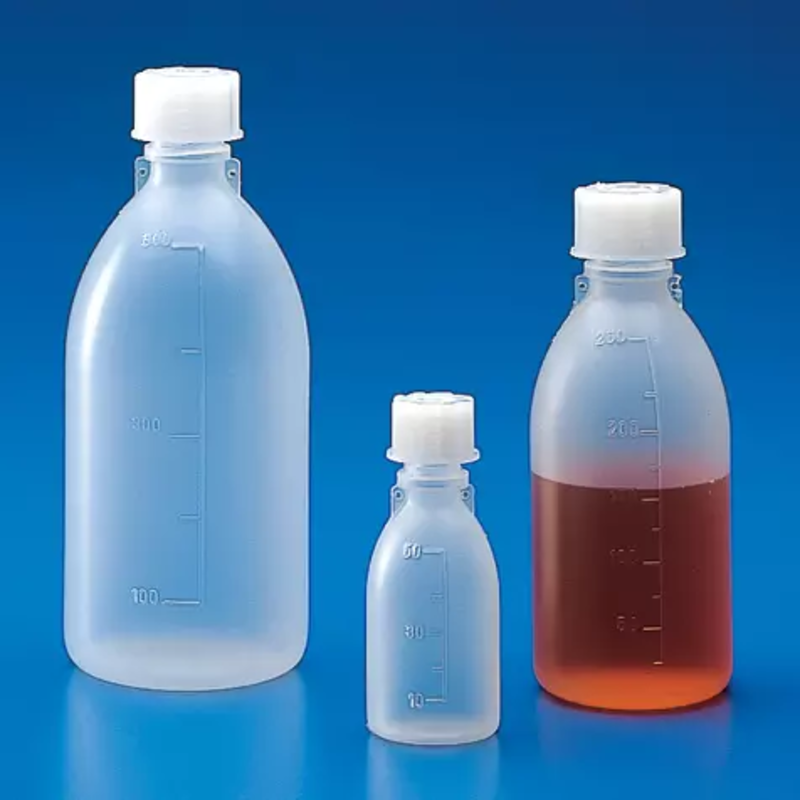Everything You Need to Know About Plastic Laboratory Bottles
April 06 2018 /
You should concern yourself when you work in laboratories, especially if you use solutions and chemicals. Containers for these chemicals should be safe for handlers. This is important to avoid any incidents that can cause injuries.
Laboratories have been relying for decades on glass bottles because they are resistant to most solutions and chemicals. However, they break easily. This property could be a safety risk, especially if their contents are dangerous. The advent of plastics has given us plastic bottles, which is a very safe alternative. These cost much less than glass bottles. Their proper care and use can give you years of dependable performance.
What are plastic laboratory bottles?
The manufacturing of plastic bottles has become diverse. You can obtain such bottles depending upon your requirements. They're strong enough to withstand significant pressure too. That makes them ideal for transport. They're used for laboratory sampling, food packaging, transport, storage, and more.
Choosing the best plastic laboratory bottle to use
When choosing plastic bottles, size and shapes aren't the only factors to consider. You also have to take into account what resins they contain. There are several plastic resins used. Each has its own physical and chemical properties. Your choice will have an effect what you can or can't do with the plastic bottle. Specific resins can safely hold substances you use. Whether you subject it to heat or freeze it in storage, the plastic bottle will maintain its elasticity.
Laboratory work needs to be meticulous. So, when choosing your lab bottles, you will need to learn about its material. This should be compatible with the solutions and chemicals you will be working on. You also have to verify the plastic's physical properties. Are they strong enough to withstand heat or cold? Here are some important guidelines when choosing plastic laboratory bottles:
Compatibility of chemicals
You have to know what kind of chemicals the bottles will come in contact with. Do this before procuring the bottles. The resin that the plastic bottles contain is important. This will determine its compatibility with the chemicals it will be dealing with. The right resin composition will resist reactions from the chemicals therein.
Also, consider other factors in the chemical resistance ratings of plastics. These include the length of chemical contact, temperature, applied stresses, and more. Choosing the right containers will require checking the correct chemical compatibility ratings. Then you'll know what materials will be suitable under specific conditions for application. Different charts are now available as references for general laboratory use.
Resistance to temperatures
The next to think about is the plastic's physical properties. Make sure that that your bottles can withstand intended temperatures. There are some plastic laboratory bottles which can withstand the heat of autoclaves and water-baths. However, many bottles cannot.
Temperature extremes will mean both freezing and boiling. Many lab works will require freezing samples and solutions. The bottles should be able to survive these cold extremes. Some plastic containers can retain their impact-resistant and elastic properties. They won't get compromised even at such low temperatures. But others become weaker and can crack when impacted.
Benefits of plastic laboratory bottles
Bottles are not the only labware made of plastics. We also have plastic funnels, beakers, pipettes, vials, and more. Glasswares, though, are still being widely used. But plastics are here to stay because of the many benefits they can offer. For one, almost all are not breakable or fragile. Their maintenance is considerably easier when compared to glass.
Aging signs for plastic laboratory bottles
It's recommended to constantly check plastic laboratory bottles for signs of aging. These can include:
- Discoloration that stays even after washing.
- Brittleness or the loss of flexibility.
- The appearance of spider web cracks.
- Vertical cracks or cracks along bends or flex points.
- Pitting and other blemishes don't wash-off.
Don't wait for lab failures to happen due to aging plastic bottles. When signs of aging appear, you should promptly replace the bottles. It's not that big a deal as the bottles aren't that expensive. Plastic bottles when they age, start to become brittle. This is because they lose their elastic property and eventually will break.
For more durable wares, get the high-quality branded kind. Of course, you also have to determine their required chemical and thermal properties. With quality and maintenance, the plastic bottles will give you many years of service.
Maintaining your plastic laboratory bottles
Proper care will give your plastic bottles longevity. Wash them properly after use. Then store them in places where without sunlight, UV light or fluorescent lights. Of course, you already know what chemicals are compatible with your plastic bottles. Too much exposure to UV light will make your bottles age faster. Their exposure to non-compatible chemicals will cause brittleness, cracking, discoloration, and more.
Wash your bottles using pH-balanced detergents. If available, you can use environmentally friendly formulas which are biodegradable and non-toxic. These products won't cause negative effects. Also, their use will make your plastic bottles last longer.
